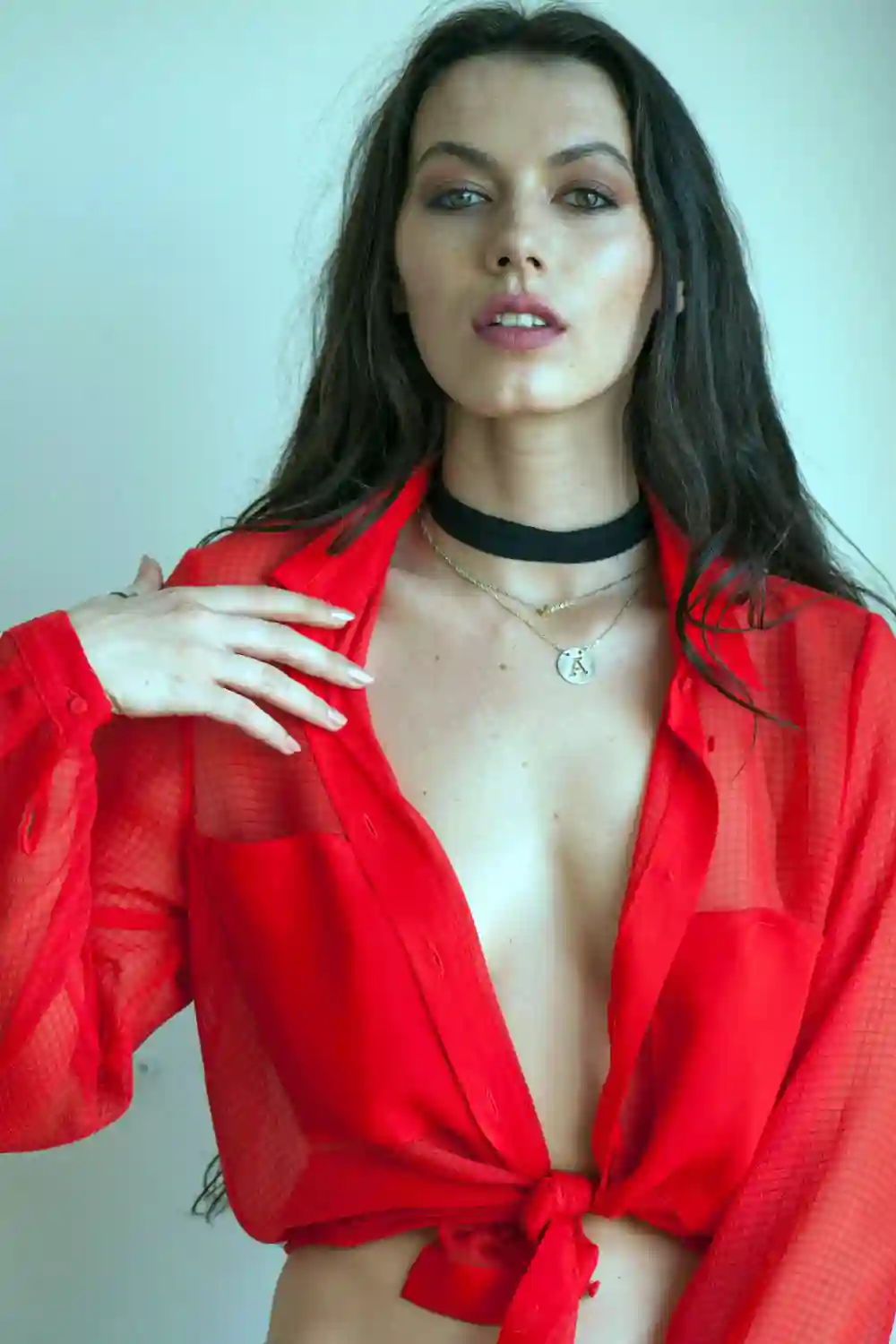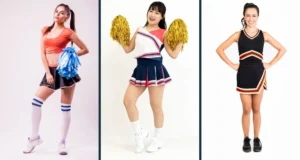The potential downsides of wearing revealing outfits vary depending on context and perspective. Several disadvantages commonly mentioned include facing negative judgment from others and experiencing objectification or sexualization.
Outfits that expose more skin can attract unwanted attention that makes one feel vulnerable. Additionally, revealing clothes may conflict with certain dress codes in professional environments like workplaces and schools.
Others argue that such clothing can perpetuate stereotypes that undermine gender equality. More importantly, wearing revealing attire may not boost everyone’s confidence or comfort levels. Some feel self-conscious in less concealing garments.
Ultimately, clothing choices are personal decisions. However, prioritizing safety and avoiding potential discomfort are sensible considerations regardless of one’s preferences.
Disadvantages of wearing revealing clothes
Negative perception and judgment from others
While fashion is about self-expression, revealing outfits can invite unwanted attention. Some drawbacks to showing too much skin include negative judgments and perceptions.
People may view revealing attire as inappropriate or immodest. This means they may think bad things about your character just from your outfit. Sadly, stereotypes judge women in provocative dresses as promiscuous. Workplaces even forbid exposing clothes due to distractions.
It’s important to remember these looks don’t define you. Still, critics may make you feel uncomfortable. If someone bothers you, speak up for yourself. You have a right to wear what you want without harassment.
Educating others can help, too. Explain clothes don’t reflect personality. Many face unfair judgments, so connecting online provides support. Focusing on confidence within also lessens outside opinions.
In the end, fashion choices are personal. But mindfulness of societal biases and your own safety helps make the best decision for any situation. True confidence comes from within, not from hiding behind clothes or loud statements alone.

Objectification and sexualization
While fashion freedom should exist, revealing attire can unintentionally cause issues. It may lead to being viewed solely as a sexual object rather than a whole person.
This objectification focuses on physical appearance rather than one’s humanity. As a result, it can invite unwelcome attention or disrespectful behavior from others.
Research confirms this stems more from suggestive poses than the amount of skin shown. However, scanty outfits still contribute to how some see women as stereotypes. This unfairly reduces them based on clothes alone. Rightfully, the blame lies with those who act in demeaning ways, not on the dressed.
If unwanted interactions happen, having the courage to establish boundaries is vital. Calmly informing the interferer their actions cause discomfort often resolves it.
Seeking community provides a helpful perspective, too. Online groups offer empathy and coping strategies for others with similar experiences. Prioritizing self-care also helps process distressing objectification.
While fashion allows self-expression, awareness of societal conditioning and safety remains important too. True confidence comes from within, not appearances or judgments of any kind.
Safety and security concerns
Safety should always be the top priority regardless of fashion choices. Outfits with minimal clothing can, unfortunately, make harassment more likely. Exposing large areas puts one at risk for unwanted advances or assaults from dangerous people.
Staying alert to your surroundings is crucial, especially in unfamiliar places. Trust instincts if a situation seems off – your gut feelings often know best. Avoid isolated spots and walk confidently. Additionally, stay near friends who can help if needed.
Reporting issues right away to authorities allows for getting proper support. However, responsibility never lies with the victim. No one deserves to feel unsafe due to clothing alone.
Layering provides flexibility to cover up in certain settings, too. Talking through fears with trusted loved ones and learning about local risks helps feel more secure as well. While self-expression matters, personal well-being must always come first. Empowerment exists within, not from the judgments of others.

Inappropriateness in certain settings
While fashion freedom matters, certain environments like learning centers or work have dress standards. Schools need students focused on academics rather than distractions. Hospitals also require sterile, serious environments for patient well-being.
Offices aim to keep professionals concentrated so businesses succeed. Even courtrooms must prioritize formal, respectful procedures over stylish attire. Some religious sites have modesty rules to maintain solemnity, too.
Not following these place-specific guidelines can result in rejection, discipline, or Even if unintentional, skimpy clothing makes focusing difficult for others. It may also signal a lack of respect or maturity compared to circumstances.
However, with awareness, adjusting attire supports respective priorities simply and diplomatically. Events instead focus on their goals rather than fashion variances. Overall, flexible adaptation shows consideration without losing individuality. Understanding context benefits all more than stubbornness.
Discomfort and restrictions in movement
While fashion allows self-expression, comfort, and confidence should be top priorities. Scanty outfits may feel uneasy and restrictive for movement. Those lacking skin coverage may constantly worry about exposure, leaving them self-conscious.
Constricting materials like synthetic fabrics trap heat and cause sweatiness instead of breathability. Natural fibers make active days and warmer weather much more enjoyable. Outfits unsuited for tasks also risk impracticality.
More than appearance matters – inner ease promotes displaying one’s true self. Form-fitting designs concentrate on magnifying each curve, but relaxing silhouettes better suit relaxing, not performing daily activities.
Fortunately, alternative outfit possibilities exist. Popular accessories frequently add personality without undressing. Focusing outwardly less means embracing inward comfort fully. That inner peace and security inspires the most tremendous sense of style in the end.

Summary
In conclusion, the disadvantages of wearing revealing clothes can vary significantly based on context and individual perspectives.
While fashion freedom allows self-expression, prioritizing safety, comfort, and avoiding negative perceptions are important considerations. Revealing outfits may attract unwanted attention or judgments from others based on unfair stereotypes. It is vital that no one feels unsafe or disrespected due to their clothing.
Understanding different settings like work or schools ensures following dress standards. True confidence comes from within, regardless of fashion choices.
Ultimately, empowerment exists through respecting oneself and others. Choosing attire that boosts inner ease and security without restricting movement enables authentically displaying personality. Flexible adaptation to circumstances while maintaining individual style benefits all situations.
FAQ
What are the disadvantages of wearing revealing clothes among students?
Wearing revealing clothes among students can lead to several issues. It may result in objectification, where female students are seen as objects instead of individuals. Some face negative judgments and false beliefs about personality from others due to their outfits. Revealing attire also increases safety concerns as it can attract the wrong attention, putting students in vulnerable situations. Other students and teachers find such clothing distracting, making it hard to focus on education. Specific settings like schools consider them inappropriate to disrupt the learning environment.
Is it bad to wear revealing clothes in a relationship?
Wearing revealing clothes in a relationship can be subjective, depending on preferences and culture. While some partners feel comfortable with it, others have concerns. It’s vital for couples to openly discuss boundaries, expectations, and comfort levels regarding clothing. In a healthy relationship, partners can freely share feelings without judgment and find a compromise respecting both individuals.
What are the disadvantages of wearing short clothes?
Wearing short clothes can expose more skin, potentially making some people uncomfortable or vulnerable to weather effects like sunburn. It may also limit movement and activity. Short attire can attract negative social judgments from unfair expectations. Safety issues may arise in environments where the skin is exposed to potential harm. Specific settings have dress codes that prohibit short clothes to maintain appropriate standards, which may result in punishment for violations. It can also increase the chances of objectification instead of being judged on character.
What are the disadvantages of wearing a skirt?
Wearing a skirt can expose legs, making them vulnerable to cold temperatures, strong winds, and damage from bruises or sunburns, depending on weather conditions. Due to limited movement, certain skirt styles may restrict mobility and make some physical activities challenging. Skirts sometimes attract unwarranted attention or negative judgments if considered too short, leading to discomfort. Dress codes in workplaces or schools could prohibit skirts, resulting in restrictions or consequences for violations of policies.
What are some examples of revealing clothing?
Revealing clothing may include short tops that show skin, like crop tops exposing the belly button or spaghetti straps revealing shoulders. Low-cut tops that reveal the chest in a V-neck shape are also considered revealing. Short shorts that rise above the knees are revealing due to displaying legs. Revealing is defined differently depending on culture, but generally means clothing allowing a lot of skin exposure, like deep necklines or styles ending above the knee level. What is seen as revealing varies in different situations and between individuals.




